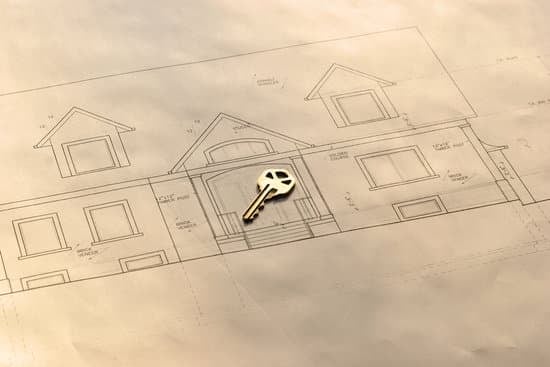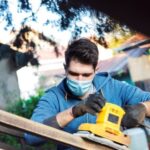Are you looking for ways to improve lower body strength at home? Lower body strength is crucial for overall health, mobility, and athletic performance.
In this article, we will explore the benefits of having strong lower body muscles, essential exercises for home workouts, and tips for improving lower body strength without equipment. Whether you’re a fitness enthusiast or just starting your journey towards a stronger lower body, this guide will provide you with the knowledge and tools to empower yourself in achieving your fitness goals.
The lower body plays a significant role in everyday movements such as walking, climbing stairs, and lifting objects. Strong lower body muscles not only improve physical performance but also contribute to better posture and balance. Understanding the importance of lower body strength is key to developing an effective workout routine that targets these muscle groups. By incorporating the right exercises and training techniques, you can enhance your lower body strength and experience the numerous benefits it brings.
One of the great things about improving lower body strength at home is the convenience and accessibility it offers. You don’t need fancy gym equipment or a costly membership to get started.
In the next sections, we will discuss how to set up a home workout space for lower body strength training, essential strengthening exercises, and valuable tips for reaching your fitness goals without leaving the comfort of your own home. Whether you’re new to exercise or a seasoned athlete, there’s something in this guide for everyone looking to boost their lower body strength.
Benefits of Having Strong Lower Body Muscles
Having strong lower body muscles offer numerous benefits that can improve overall health and wellness. Here are some key advantages to having a strong lower body:
1. Improved Balance and Stability: Strong lower body muscles, including the quadriceps, hamstrings, and glutes, play a crucial role in maintaining balance and stability. This is especially important as we age to prevent falls and maintain independence.
2. Enhanced Performance in Daily Activities: Whether it’s climbing stairs, carrying groceries, or simply getting up from a chair, having strong lower body muscles makes these activities easier and less taxing on the body.
3. Injury Prevention: Building strength in the lower body can help reduce the risk of common injuries such as knee pain or strains in the hips and legs. This is particularly important for individuals who engage in physical activities or sports.
4. Boosted Metabolism: Lower body strength training can also contribute to an increase in overall metabolism by building lean muscle mass, which can support weight management and improve energy levels.
Now that we understand the benefits of having strong lower body muscles, it’s essential to explore how to improve lower body strength at home without the need for expensive gym equipment or memberships. By focusing on targeted exercises and incorporating resistance training, individuals can effectively strengthen their lower body muscles from the comfort of their own home. Let’s delve into essential exercises and tips for achieving greater lower body strength without equipment.
These exercises can all be performed at home without any specialized equipment, making them accessible for individuals looking to enhance their lower body strength with minimal resources. In addition to these exercises, incorporating resistance training using household items such as water bottles or resistance bands can further challenge the lower body muscles for continued growth and development.
By following these tips for improving lower body strength without equipment, individuals can create effective home workout routines that target key muscle groups in the lower body and contribute to overall physical well-being”.
Setting Up a Home Workout Space for Lower Body Strength Training
When it comes to improving lower body strength at home, having a dedicated workout space can make a big difference. Setting up a home workout space for lower body strength training doesn’t have to be complicated or expensive. It’s important to create a space that is motivating, comfortable, and equipped with the necessary tools for an effective workout.
First and foremost, find a spot in your home that allows for free movement and has good ventilation. It could be a spare room, a corner of your living room, or even your backyard if weather permits. Make sure the area is well-lit and has enough space for you to move around comfortably.
Investing in some basic equipment can also enhance your lower body strength training at home. Consider getting a yoga mat for floor exercises, resistance bands for added challenge, and possibly dumbbells or kettlebells if you want to incorporate weight training into your routine. Having these tools readily available in your workout space can make it easier to stay consistent with your exercises.
Lastly, don’t forget about the importance of ambiance. Play some upbeat music that motivates you, add some plants or artwork to create an inspiring environment, and keep the area organized so that it’s inviting every time you step in for a workout session.
| Equipment | Benefits |
|---|---|
| Yoga mat | Provides cushioning and support during floor exercises |
| Resistance bands | Adds variety and challenge to lower body workouts without taking up much space |
| Dumbbells/kettlebells | Allows for progressive overload and strength gains over time |
Creating an inviting workout space at home can inspire more frequent workouts and help you stay focused on improving lower body strength without the need for expensive gym membership or commute times. With the right setup, motivation, and equipment, working on your lower body muscles can become an enjoyable part of your daily routine.
Essential Lower Body Strengthening Exercises for Home Workouts
Lower body strength is crucial for everyday activities, sports performance, and overall functional movement. When it comes to working out at home, it’s important to incorporate exercises that target the lower body muscles effectively. Here are some essential lower body strengthening exercises that you can do at home to improve your lower body strength.
1. Squats: This exercise targets the quadriceps, hamstrings, glutes, and calves. You can perform bodyweight squats or add resistance by using a pair of dumbbells or a kettlebell.
2. Lunges: Lunges work the quadriceps, hamstrings, glutes, and hip flexors. You can do forward lunges, reverse lunges, or walking lunges to challenge different muscle groups in the lower body.
3. Deadlifts: Deadlifts are excellent for targeting the hamstrings, glutes, and lower back muscles. If you have a set of dumbbells or a barbell at home, you can perform Romanian deadlifts or sumo deadlifts for an effective lower body workout.
4. Step-ups: Step-ups are great for improving leg strength and balance. You can use a sturdy chair or bench to perform step-ups and increase the challenge by holding onto weights while doing this exercise.
These exercises are fundamental for building lower body strength at home without the need for specialized gym equipment. By incorporating these movements into your home workout routine, you can effectively target all major muscle groups in your lower body and improve your overall strength and stability.
| Exercise | Muscle Groups Targeted |
|---|---|
| Squats | Quadriceps, Hamstrings, Glutes, Calves |
| Lunges | Quadriceps, Hamstrings, Glutes, Hip Flexors |
| Deadlifts | Hamstrings, Glutes Lower Back Muscles |
| Step-ups | Leg Strength and Balance |
Tips for Improving Lower Body Strength Without Equipment
Improving lower body strength at home can be achieved even without the use of expensive equipment or a gym membership. Here are some tips for maximizing your lower body workout without the need for specialized gear:
1. Bodyweight Exercises: One of the most effective ways to improve lower body strength at home is through bodyweight exercises. These exercises utilize your own body weight to build muscle and strength. Some key bodyweight exercises for lower body strength include squats, lunges, and glute bridges.
2. Plyometric Workouts: Incorporating plyometric exercises into your routine can help improve lower body strength and power. Plyometrics involve explosive movements such as jump squats, box jumps, and burpees, which can enhance muscle force production and overall athletic performance.
3. Use Household Items: You can get creative with household items to add resistance to your lower body workouts. For example, using a filled water jug as a makeshift kettlebell for squats or lunges, or using a sturdy chair for step-ups or tricep dips.
By incorporating these tips into your home workout routine, you can effectively improve your lower body strength without the need for expensive exercise equipment.
Remember to consult with a fitness professional before starting any new exercise program, especially if you are new to exercise or have any existing health concerns. With commitment and consistency, you’ll see progress in improving your lower body strength at home in no time.
Incorporating Resistance Training for Lower Body Strength
Understanding the Benefits of Resistance Training
Resistance training, also known as strength training, is an essential component of improving lower body strength at home. This form of exercise involves working against a force to build muscle strength and endurance. When it comes to the lower body, resistance training helps to target and strengthen muscles such as the quadriceps, hamstrings, glutes, and calves. By incorporating resistance training into your home workouts, you can effectively build muscle mass, increase bone density, and improve overall lower body function.
Effective Resistance Training Exercises for the Lower Body
There are various resistance training exercises that specifically target the muscles of the lower body. These include squats, lunges, deadlifts, leg presses, and calf raises. Each of these exercises can be modified and performed with or without additional weight or resistance bands to gradually increase the challenge and stimulate muscle growth. Incorporating a combination of these exercises into your home workout routine can effectively improve lower body strength over time.
Tips for Incorporating Resistance Training at Home
When incorporating resistance training for lower body strength at home, it’s important to start with proper form and technique to avoid injury. Additionally, gradually increasing the weight or resistance used in each exercise will help to continuously challenge your muscles and promote growth.
Whether using dumbbells, kettlebells, resistance bands, or even household items like water bottles or cans as weights, there are plenty of options for adding resistance to your lower body workouts at home. Remember to listen to your body and make adjustments as needed to ensure safe and effective progress in improving lower body strength through resistance training.
The Role of Nutrition in Building Lower Body Strength
Proper nutrition plays a crucial role in building lower body strength, as it provides the necessary fuel and resources for muscle growth and recovery. Whether you are engaging in resistance training or bodyweight exercises, your diet can significantly impact your ability to improve lower body strength at home.
Macronutrients for Lower Body Strength
First and foremost, it is important to focus on consuming adequate amounts of proteins, carbohydrates, and healthy fats. Proteins are essential for muscle repair and growth, while carbohydrates provide the energy needed for intense lower body workouts. Healthy fats help in hormone production and aid in nutrient absorption, both of which are important for overall strength development.
Hydration and Muscle Function
In addition to macronutrients, proper hydration also plays a key role in building lower body strength. Water is essential for maintaining optimal muscle function and preventing fatigue during workouts. Dehydration can lead to decreased performance and hinder your progress in improving lower body strength at home.
Supplements to Support Lower Body Strength
While whole foods should be the primary source of nutrients, certain supplements can also support lower body strength development. Creatine monohydrate, for example, has been shown to enhance muscle strength and power during resistance training. Additionally, branched-chain amino acids (BCAAs) can aid in muscle recovery and reduce exercise-induced muscle soreness, allowing for more effective lower body workouts. However, it is important to consult with a healthcare professional before incorporating any new supplements into your diet.
By paying attention to your nutrition and making appropriate dietary choices, you can maximize the results of your lower body strength training efforts at home. With the right balance of macronutrients, proper hydration, and potential supplementation, you can support muscle growth and recovery while working towards achieving your fitness goals.
Tracking Progress and Setting Realistic Goals
One of the key components of improving lower body strength at home is to track your progress and set realistic goals. By keeping track of your workouts, you can monitor your improvement over time and adjust your training accordingly. This can be done by logging the number of reps, sets, and weights used for each exercise. You can also take measurements of your lower body muscles to see changes in size and strength.
When setting goals for improving lower body strength, it’s important to be realistic and patient. Many people make the mistake of setting unrealistic goals that are difficult to achieve, leading to frustration and disappointment.
Instead, start with small, achievable goals and gradually increase the intensity as you progress. For example, if you’re just starting out with lower body strength training, a realistic goal might be to increase the number of squats or lunges you can do in a set amount of time.
In addition to tracking your progress and setting realistic goals, it’s important to celebrate your achievements along the way. Whether it’s reaching a new personal record in weightlifting or noticing increased muscle definition in your legs, acknowledging your progress can help keep you motivated on your journey to improving lower body strength at home.
Remember that consistency is key when it comes to achieving long-term results, so stay focused on your goals and keep pushing yourself towards improvement.
The Importance of Rest and Recovery in Lower Body Strength Training
Rest and recovery are often overlooked aspects of any fitness routine, including lower body strength training. Many people believe that the more they push themselves, the better results they will achieve. However, without proper rest and recovery, the muscles do not have a chance to repair and grow, leading to a plateau in progress or even potential injury. Understanding the importance of rest and recovery is crucial for anyone looking to improve lower body strength at home.
After intense lower body workouts, the muscles undergo micro-tears, which is a natural part of the muscle-building process. It is during the resting period that these tears are repaired and the muscles become stronger. Without adequate rest, the muscles do not have time to recover, leading to fatigue and decreased performance in future workouts. Therefore, it is important to allow for at least 48 hours of rest between intense lower body strength training sessions.
In addition to rest days, incorporating active recovery activities such as stretching, yoga, or low-intensity cardio can help improve circulation and promote muscle repair. It is also essential to prioritize sleep as part of the rest and recovery process. During sleep, the body releases growth hormones that aid in muscle repair and growth. Aim for 7-9 hours of quality sleep each night to support your lower body strength training efforts at home.
Conclusion
In conclusion, improving lower body strength at home is not only achievable but also crucial for overall health and fitness. By understanding the importance of lower body strength and the benefits it brings, individuals can empower themselves to take charge of their own strength training routine. Setting up a dedicated workout space at home and incorporating essential lower body strengthening exercises, even without equipment, can make a significant difference in building strength and endurance.
Furthermore, integrating resistance training and focusing on proper nutrition can further enhance the results of lower body strength training. Keeping track of progress, setting realistic goals, and prioritizing rest and recovery are also essential components of a successful at-home lower body strength program. With dedication and consistency, individuals can see noticeable improvements in their lower body strength, which can translate to improved athletic performance, reduced risk of injury, and enhanced quality of life.
Ultimately, by following the tips and guidelines outlined in this article on how to improve lower body strength at home, individuals have the power to take control of their fitness journey. With the right mindset and persistence, anyone can achieve significant gains in lower body strength from the comfort of their own home.
So whether you’re a beginner or experienced athlete, committing to improving your lower body strength can bring about positive changes that contribute to overall physical well-being.
Frequently Asked Questions
How Can I Build Lower Body Strength at Home?
Building lower body strength at home can be achieved through a variety of exercises such as squats, lunges, deadlifts, and leg presses. Using resistance bands or bodyweight exercises can also help in strengthening the lower body.
What Increases Lower Body Strength?
Lower body strength can be increased by consistently performing resistance training exercises that target the muscles in the legs, hips, and glutes. This includes activities like weight lifting, running, cycling, and swimming which engage these muscle groups and contribute to their growth and development.
How Do You Activate Your Lower Body?
Activating your lower body involves engaging the major muscle groups through specific exercises such as glute bridges, hip thrusts, and leg extensions. These movements target the muscles in the hips, thighs, and glutes while also improving flexibility and mobility for overall lower body activation.

I’m thrilled to have you here as a part of the Remodeling Top community. This is where my journey as an architect and remodeling enthusiast intersects with your passion for transforming houses into dream homes.





